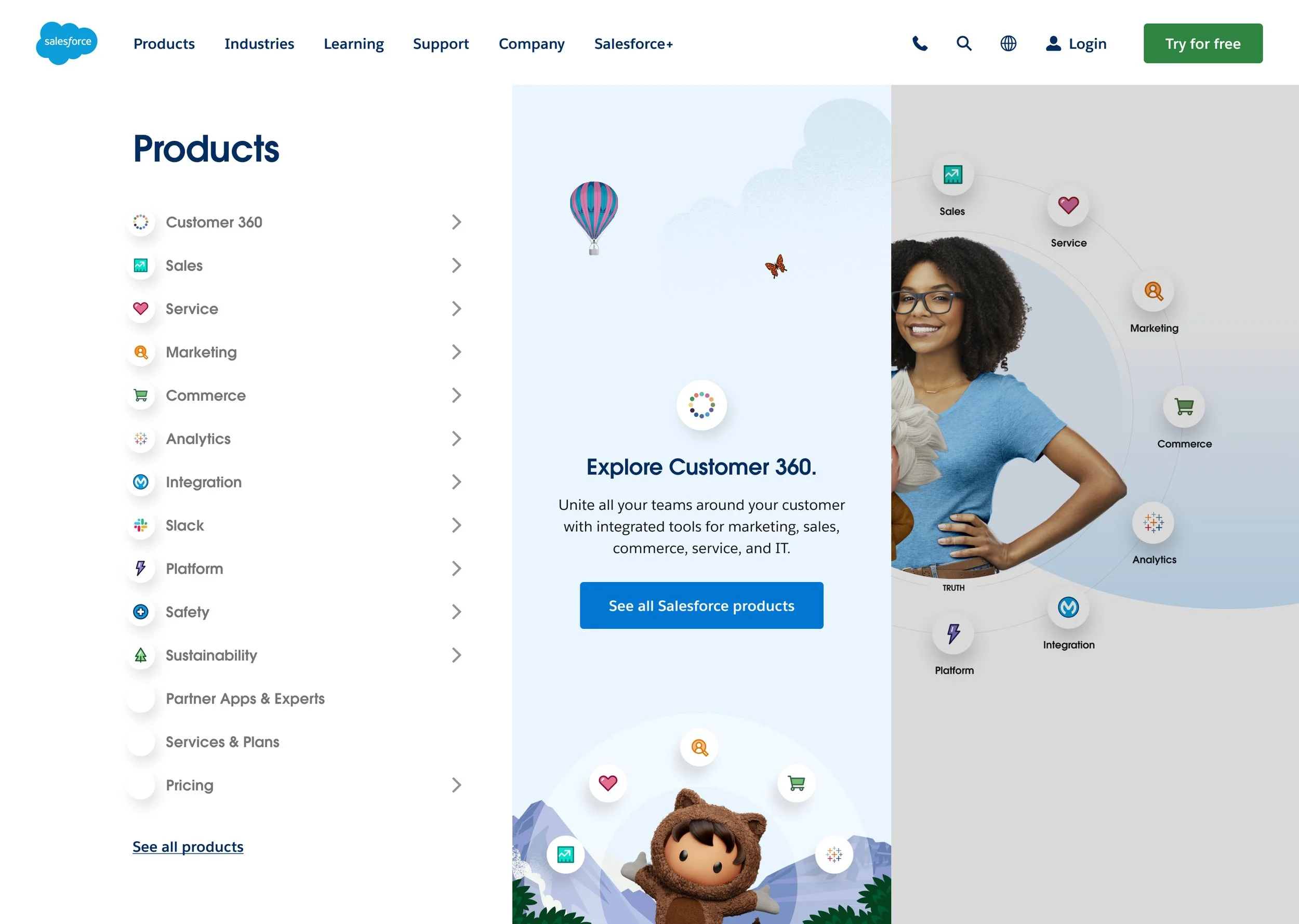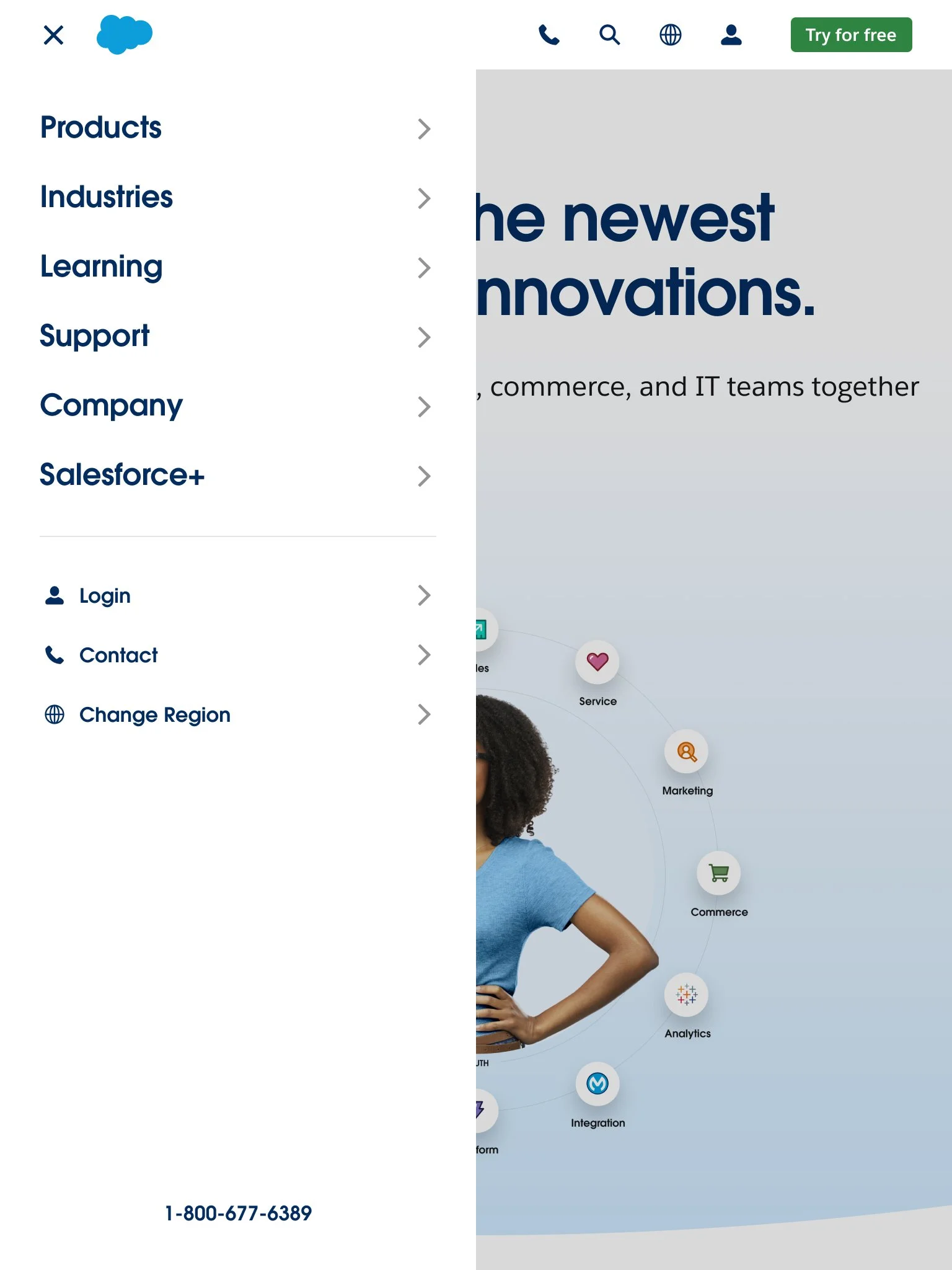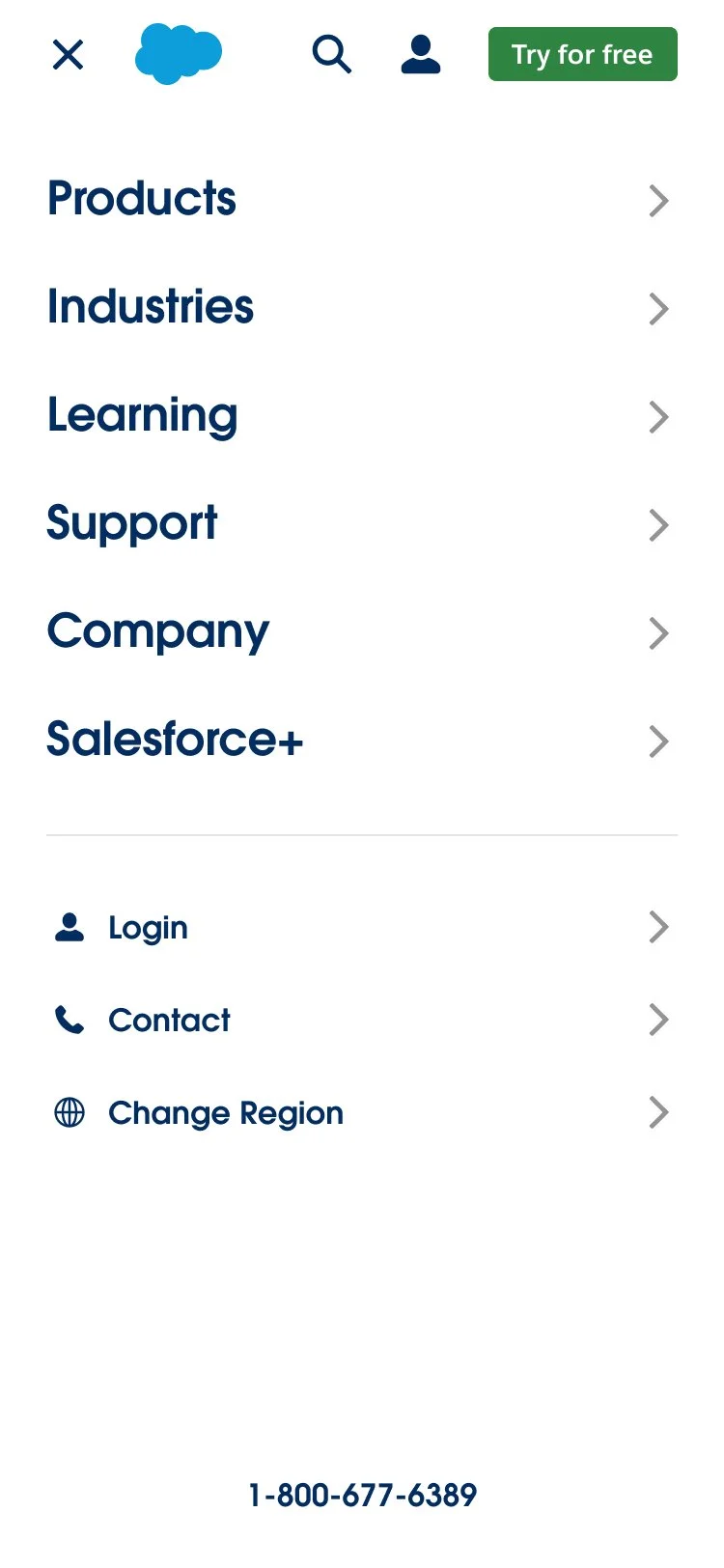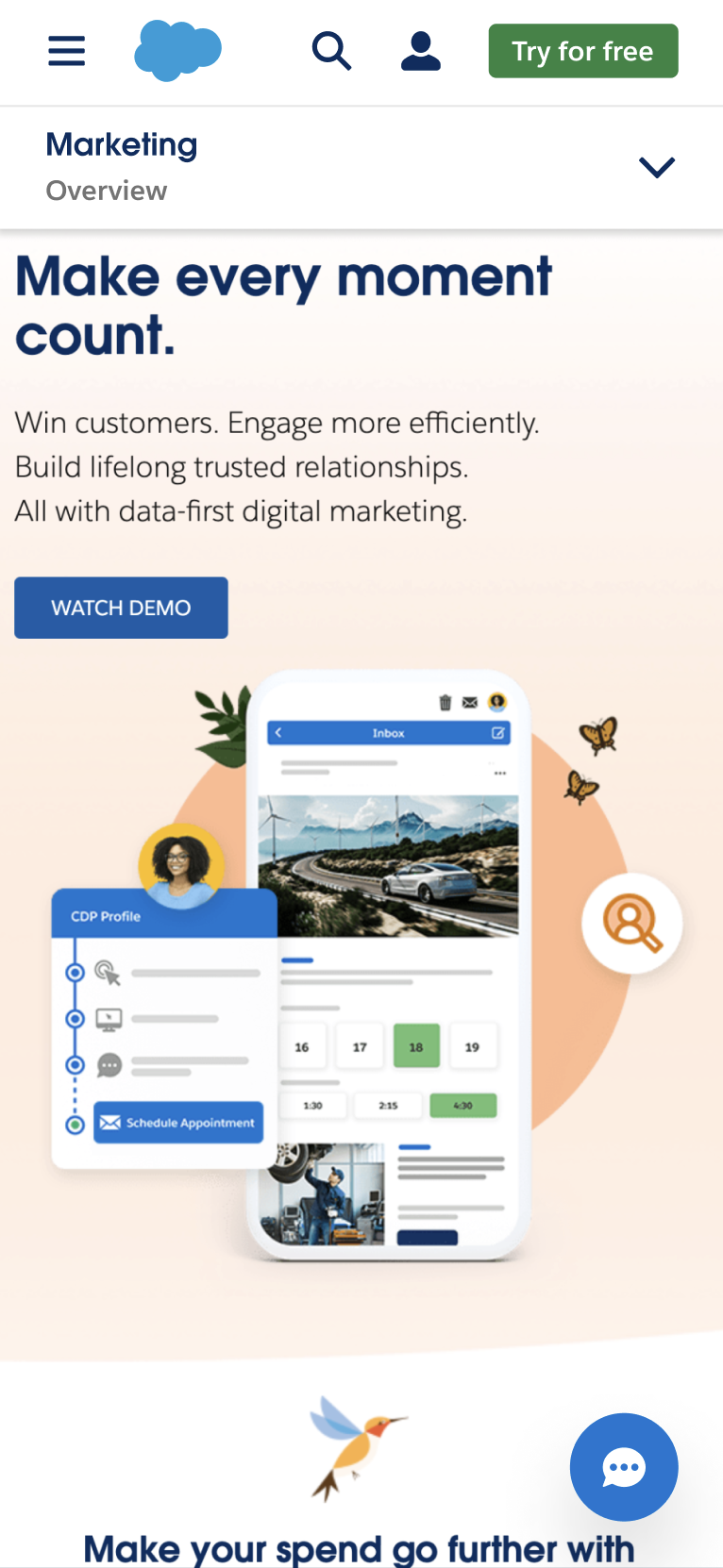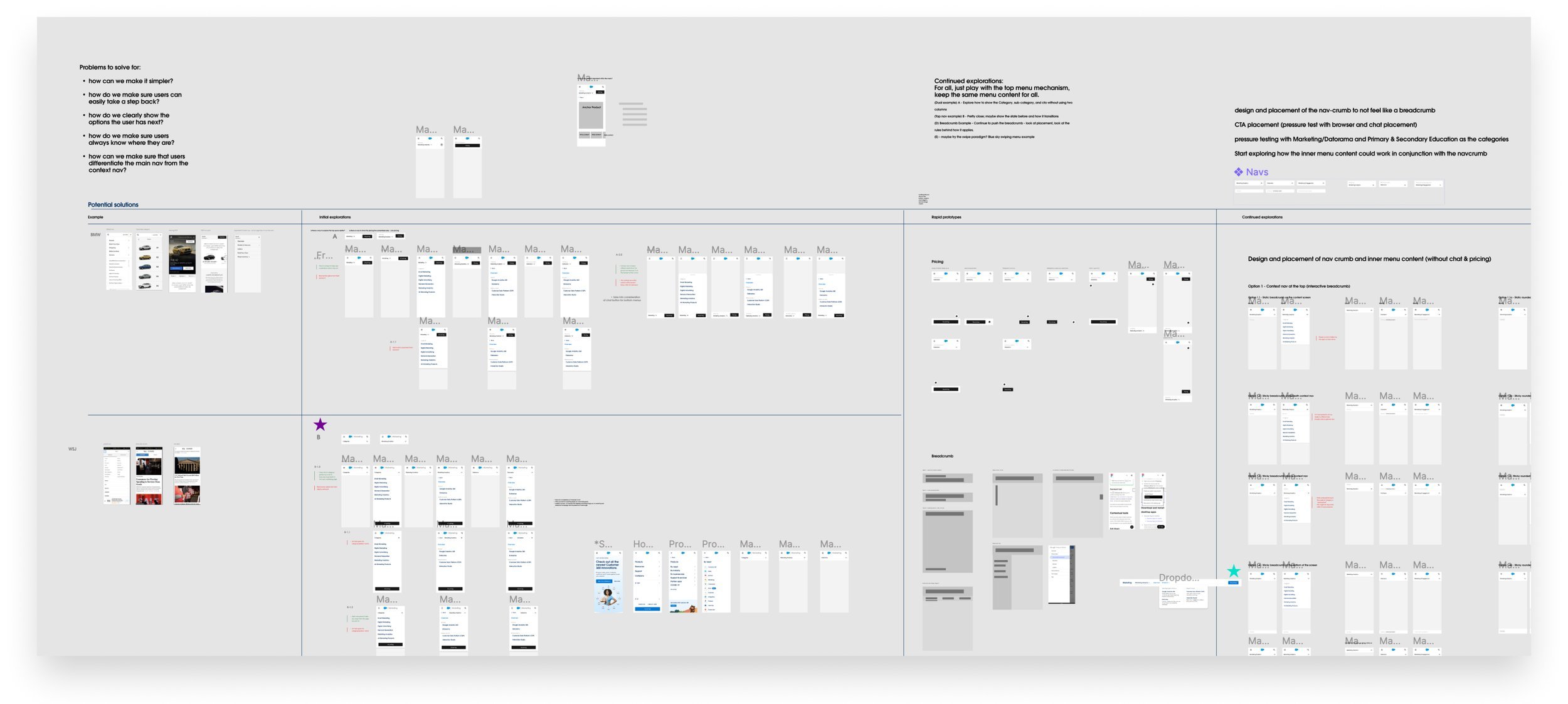
Unifying navigation.
Salesforce.
The Challenge
As Salesforce rapidly expanded, its online ecosystem became fragmented, with inconsistent navigation structures across multiple domains. Users found the experience disjointed and difficult to navigate, leading to frustration, lower engagement, and reduced discoverability of key resources. Internally, diverse tech stacks and disconnected systems complicated maintenance and scalability.
Salesforce.com needed a scalable, adaptable navigation system to provide a cohesive experience while allowing individual teams to customize their implementation.
My role
As Experience Design Director and UX Lead for the Cross-Site Framework team at Fantasy, I led the design of a mobile-first contextual navigation system for Salesforce’s online ecosystem. The goal was to empower internal teams with a flexible and modular framework, allowing them to easily surface relevant products and services aligned with their unique business objectives. My focus was on creating a system that balanced consistency across the platform with the independence needed for localized business priorities.
Team & Scope
Disciplines:
Experience Strategy & Design, Product Design, Product Management.
Key Deliverables:
UX framework, navigation system prototypes, global, contextual & responsive navigation models.
Client headquarters:
San Francisco, California.

Solution: Navigation as a service
To unify Salesforce’s online ecosystem while preserving flexibility for internal teams, we designed a micro front-end navigation framework. This modular system provided a standardized structure while allowing teams to adapt navigation to their specific goals:
Global Navigation (L1 & L2): A universal framework applied consistently across all properties.
Contextual Navigation (L3 & L4): Customizable layers designed to enable deeper content exploration and business-specific flexibility.
Utility Navigation: Shared elements such as search, region settings, and account management, ensuring cohesion and brand alignment.
This approach empowered teams to surface relevant products and services independently, while maintaining a coherent and scalable user experience across Salesforce’s expansive digital presence.
Outcome & Impact
The impact was immediate. In the first week alone, interaction rates—unique clicks and total page views—increased dramatically across the system and devices. Internal teams quickly adopted the new navigation system, providing extraordinary feedback on its usability and adaptability. The improved experience also contributed to a notable increase in new business leads, reinforcing the value of a unified, scalable navigation framework.

